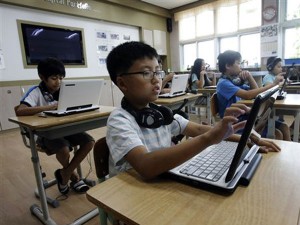Last fall (2010) The American Association of State Colleges and Universities (AASCU) launched its
Red Balloon Project, focused on helping AASCU institutions re-imagine undergraduate education.
Read Mehaffy's full paper. Emporia State University faculty, staff, and students were asked to brainstorm and share some thoughts. Sadly, only three individuals cared enough to respond. Below is my edited response.
Mehaffy’s statement is right on the money –
In a content-rich environment, with unlimited access to information by everyone, the role of the faculty member should be profoundly different. Faculty should focus most of their effort on creating learning environments, interactive places where students can learn. This doesn’t necessarily mean classrooms; indeed to create higher quality learning for more students possible, faculty may have to spend the majority of their teaching work outside of classrooms, designing activities for students outside of class.
Meaningful, relevant, and engaging activities.
As professors, most of us are still mired in the delivery of content. This was necessary when books were few and professors really were considered the fount of all knowledge. The times have changed and many of us have not moved on. Overall, textbooks, journals, magazines, audio, video, interactive multimedia, and the web (to name a few), do a much better job of delivering content. The bottom line is that students don’t need professors/instructors to deliver content via lecture. Students need professors/instructors who can design and facilitate meaningful, relevant, and engaging activities that reinforce the content. Are all lectures bad? No. We can all recall one or two professors or colleagues who deliver incredible lectures that engage the entire audience. However, I will argue that these individuals are rare.
I often ask students in my classes to describe what they would consider as their most memorable and meaningful learning experience in their academic career; an experience in which they felt they learned more than any other time. Do they mention the time their teacher lectured (delivered content) with the help of a bullet-riddled PowerPoint presentation? No. Most often, they reflect on an activity; a meaningful, relevant, and engaging activity. They describe a well-designed activity that reinforced the content. Interestingly, the students often describe the activity/project as difficult, demanding, and time-consuming . In the same breath however, they mention how much they learned, how engaged they were in the activity, how worthwhile, and how much fun they had. Many of these activities occurred outside of the classroom, in the form of group projects and field trips.
Technology’s role.
As I mentioned earlier, media can play a critical role in delivering content. The media are out there, ranging from books to the web. As professors and instructors, we don’t need to compete with these media. We should embrace the media, let them do what they do best, and move on to other roles such as designing activities. A quick story about podcasts: Several years ago, a colleague approached me about using podcasts for his class. He stated, “If I put all my lectures on podcasts, none of my students will want to come to class.” My response: “If that’s all they are getting in class, then I wouldn’t blame them for staying home.” It never occurred to my colleague that, by making his lectures available before class, he could use his class time to reinforce the most important concepts and to facilitate meaningful and engaging activities. Technology solutions such as podcasts/vodcasts, web, and social media can be used to free professors/instructors from simply delivering content. Then, we can spend our time designing meaningful, relevant, and engaging activities (in both face-to-face and online classrooms). I firmly believe that if we can make this change, we can create incredible learning experiences for our students; experiences that could eventually revive under-enrolled programs, create new excitement at our university, and make our university a place that students want to attend, over and above all other universities.






